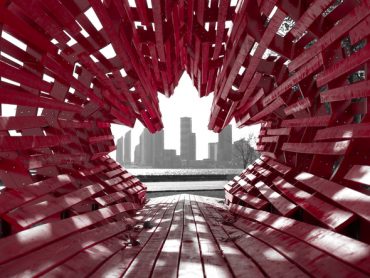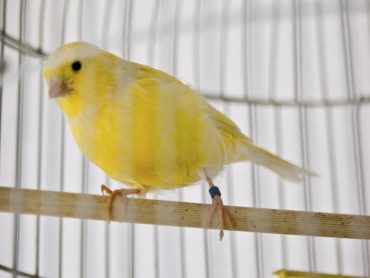Merchandizing Romantic Getaways
As we slide into February, the traditional low occupancy winter blues for hotels (outside of the sun destinations) is punctured by the healthy returns netted from Valentine’s Day couples’ getaways. While standard articles might focus on ways to drum up last minute purchases through packaging and promotional efforts, the next step is to ask yourself: how to capture more incremental revenue before guests arrive?
The concept here is to maximize the profits from each customer so that this romantic time of year becomes a truly fantastic cash grab. And a great way to achieve this goal is to properly display and merchandize all of your amenities and onsite offerings.
Essentially, any form of ancillary revenue like this falls under the broader banner of personalization, for which a landmark study in February 2017 from Think by Google found that 62 percent of consumers are more likely to choose, recommend and spend more on brands that deliver these personalized shopping experiences.
Luckily, in the hospitality space there are a handful of digital platforms that can give incoming guests a seamless portal by which to view and buy individual rooms or suites as well as give access to dining, spa, retail, entertainment, activities and so on.
RevPAR Versus RevPAG
Central to this discussion is to first understand the difference between RevPAR (revenue per available room) and RevPAG (revenue per guest). The former is often the standard metric for a hotel’s growth and overall success, particularly from the management company’s perspective. However, by analyzing your sales through the latter number, you can better determine what types of guests are producing the greatest profit margins.
A simple comparison to illustrate this point is by looking at a resort destination that deals with both business groups as well as free independent travelers looking for a respite. So, you have a better picture in your mind, suppose this asset is beachside, has multiple restaurants that all stay afloat purely due to beverage sales, bookable onsite activities at an extra cost and a high-end spa.
Any prudent hotelier automatically knows that both cohorts are essential to a property’s success, especially for midweek occupancy. But at its significantly lower room rate negotiated as part of massive room block contract combined with the fact that corporate guests are locked in meetings or conferences all day and thus less likely to use the full spectrum of amenities, it doesn’t take an accounting ledger to realize that those FITs are a comparative monetary boon.
The issue then is, of course, how to make such a resort, or any property for that matter, such an attractive and well-regarded place that it doesn’t need to offer any special discounts on room blocks in order to meet its monthly budgets.
Prearrival Prompts
As a solution to this, it all comes back to giving all your guests the right prompts about additional purchases to augment their hotel experiences prior to arrival.
Once your travelers have arrived on property, they’ve already made up their minds about what they intend to do each day, and it is much harder to convince them to spend on the spot, especially for business guests who are laser-focused on their meetings and only likely to splurge on some F&B after a hard day’s work. True, there are always some whimsical buyers, particularly in the leisure cohort, but why leave it to the last minute?
By informing customers well in advance of arrival of all the options available to them, you are giving them the opportunity to passively browse through the full selection of choices with no time pressure or other more immediate tasks to distract them, and all from the comfort of their own homes. Moreover, because such prearrival prompts nowadays will almost always come via neatly designed webpages, this affords you more space to effectively convey the full value of each additional offering.
Lastly, in terms of the prearrival window from reservation to check-in, consider this study by Statista which found that nearly half of travelers from the United Kingdom in recent years booked their trips two months or more in advance. Such a lengthy period affords any hotel enough time to properly reach out to travelers and present a good case for spending more to get a better onsite experience.
What to Merchandize
Knowing that there’s a profound financial gap must then be followed by an examination of what exactly a property can promote to incoming guests in order to drive revenues. In short: everything!
As hotel rooms are a quintessential example of perishable inventory, it stands that if you have one standard room and one suite both empty on any given night, you’re losing more money on the latter. So, the easiest way to test out a prearrival system is to try to upsell guests on your suites product.
Moreover, similar to how airlines let you select individual seats, new platforms are emerging that enable this functionality for hotel rooms. Harking back to the Valentine’s theme of this article, how romantic do you think it is to enter the room assigned to you and your hubby only to realize that you have a stunning, front row view of the HVAC system on the conference center roof?
Kind of a buzzkill, no? Such in-the-moment issues and any negative fallout that percolates onto TripAdvisor can be avoided, however, by giving more context to each guestroom’s specific features including fireplaces, sofa orientations, positioning relative to the elevator and, of course, the views. Then it’s a matter of giving your customers a system by which to make an informed decision on any individual room selections or even room upgrades – all for an incremental charge, if you so desire.
Within this same example, not only could this couple dodge the ‘captivating’ HVAC view but they could also choose one of your superior rooms that happens to have an oversized, aerated tub to help make their getaway even more extraordinary. Customers are chomping at the bit for these sorts of preference selections. Thankfully this ‘attribution selling’ functionality is now no longer hypothetical either, with third-party room selection and visual merchandizing software providers like Koridor boasting that just over 50% of users on the platform select their specific rooms while over 10% of them opt to upgrade.
Beyond this, the axiomatic adage of ‘seeing is believing’ applies whereby any additional purchase is made all the more enticing by imagery, videos and other forms of heightened interactivity. For instance, a hotel might send out a special link to Valentine’s package buyers that displays in-room romantic offerings available upon arrival such as a bottle of chilled sparkling white wine, a tray of assorted truffles or what the room would look like if it was festooned with flowers.
Now broaden the context to a 365-day calendar where you can merchandize not only in-room comforts but also special spa treatments, seasonal food specials, activities or events. Ultimately, what you see is that the base room rate becomes merely a starting point for the customer purchase pathway, and that any further sales prompts are actually a fantastic way to deepen the rapport with guests, even if nothing is in fact bought during that interaction.
How to Merchandize
It’s one thing to list off some examples of in-room amenities that can be hypothetically sold during the prearrival period; it’s a whole other to build a system that can load dynamic visuals into a live online platform for guests to peruse.
The first step is to thoroughly reevaluate your booking engine and any bolt-on skins or platforms on the market. I can guarantee that there are features you aren’t familiar with or utilizing to their optimal capacity that can help to better display any incremental offerings. Reiterating the above point, the key here is to deploy visuals. For the romance example, no matter how great my wordsmithing is in describing a pastry chef’s delicious truffles, a well-lit image will always be better. And better still will be those same truffles rendered in the exact spot where they will be physically placed in the room if the guest decides to buy them.
While such heightened interactivity does involve a fair share of psychological compulsion towards incremental revenues at the prearrival stage, it may soon become an essential tool for building excitement to then ensure higher satisfaction scores after guests leave. In this sense, the onsite and prearrival experiences, as well as the memorability of the experience post-checkout, can have a synergistic relationship. If you see the value for Valentine’s Day and the rest of the calendar year, let’s chat to see what and how to best merchandize all of your hotel.




